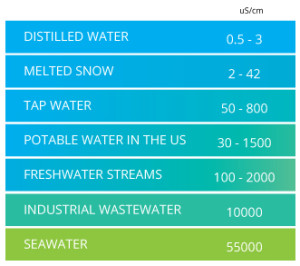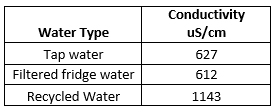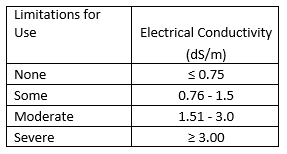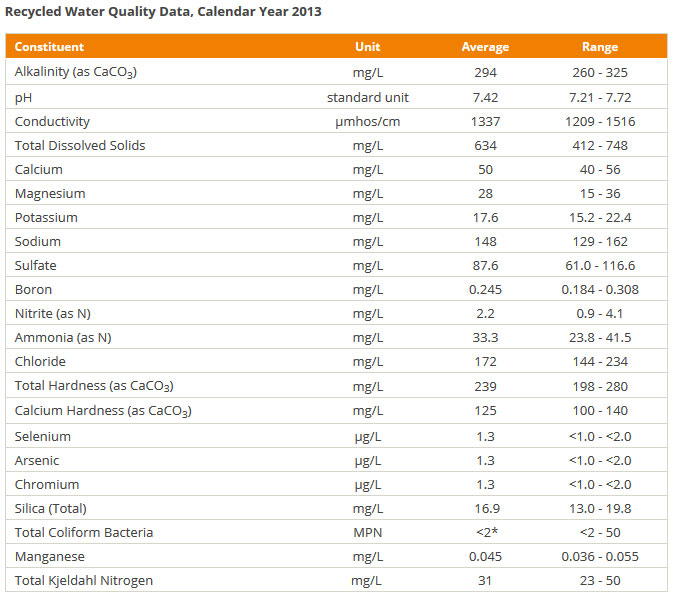What is in recycled water?
The process to create recycled water begins at the end of a wastewater treatment plant. Think of its source as water suitable for the receiving waterway. Depending on how it’s treated – recycled water will be dosed with some Sodium Hypochlorite (NaCl) [I’ll call it Chlorine] – used as a disinfectant.
The recycled water permit issued by the state dictates how much residual Chlorine is in the water – Title 22 is that permit if you want some bedtime reading – http://www.cdph.ca.gov/certlic/drinkingwater/Documents/Lawbook/RWregulations-01-2009.pdf.
At every recycled water treatment facility, they are required continually test their recycled water Chlorine residual levels 24 hours a day and store the results.
As Sodium Hypochlorite combines with free organic material in the water and kills it – uptake occurs in which “eats up” the free chlorine. Once all the free chlorine is consumed, any excess that is added become residual. This uptake contributes to the amount of “chloride” in the water which Dublin San Ramon Services District proudly displays on their website under “Recycled Water Quality Data“.
Basically – there is chlorine in the water we’re exposed to – that’s a given – but recycled water has a generally higher amount and some plants can’t handle it.
What else can we look at in the water?
Conductivity
Conductivity is a measure of the ability of water to pass an electrical current. Water with high conductivity tends to have a lot of dissolved solids in it (like salt) and water with low conductivity tends to have no dissolved solids – like distilled water, rain water, etc. You can read more about Conductivity here: http://www.fondriest.com/environmental-measurements/parameters/water-quality/conductivity-salinity-tds/
So what does this mean?
A sample of recycled water and its conductivity measured to be 1143 – 1337 uS/cm. Based upon the following chart, it has a similar amount of total dissolved solids as potable water in the US or fresh water streams. This test of conductivity is not official as it was a one off grab sample, but definitely a starting point.

To put things into perspective – see the following chart with water sources available to you.

The conductivity of tap water is half that of recycled water, and fridge water is only a few points lower than tap water – due to the water filter in the fridge. All three numbers are in the acceptable range for freshwater streams and municipal tap water in the US. As always recycled water should not be consumed.
Granted, most recycled water uses are for ornamental purposes – it is still important to understand what would cause browning of leaves and insufficient growth in plants.
As per the “Irrigation Water Quality Criteria” (http://www.ext.colostate.edu/pubs/Crops/00506.html) report published in October 2014 from Colorado State, it is essential to know about the quality of water in your irrigation water. It helps to determine how well your “crop” will perform.
For the Colorado State report – electrical conductivity is the first factor they look at. Their measurement is in dS/m. To convert uS/cm to dS/m, divide by uS/cm by 1,000.

The recycled water in this case has “some” limitations for use, as 1337 uS/cm is 1.337 dS/m.
You can read more about how saline sprinkler water affects crops – http://www.ext.colostate.edu/pubs/Crops/00506.html
Here comes the good part! – UC Davis Report
Now that we have all of this data, and we know a little about what is in the water, what does it mean?
What possible negative impact does Recycled Water have on plants in the garden?
UC Davis published a study in 2005 on “Landscape Plant Selection Guide for Recycled Water Irrigation” (http://slosson.ucdavis.edu/landscape_plant_selection_guide_for_recycled_water_irrigation/) and came up with 4 classifications to describe how well different plants handle irrigation from recycled water. Highly Tolerant, Tolerant, Moderately Tolerant and Sensitive.
In their study, they applied recycled water from San Jose’s Wastewater Treatment Plant to plants with spray irrigation and found some plants – like those usually found along the coast – had higher tolerances to recycled water and some were very sensitive to recycled water.
I know in my own experiences in my yard I have some plants that can handle the water and others just cannot stand it.
Highly Tolerant
For a plant to be Highly Tolerant of salt in recycled water, they must be able to withstand “salt spray with 1000mg/L-1 NaCl and are tolerant to soil salinity beyond 10 dS/m-1. “
Given the data above, the recycled water from DSRSD is well below those numbers. “Soil Salinity” is something you would need to perform on the ground at your house. I don’t know what those numbers would be.
As we learned from the Colorado State report – 3 dS/m is even considered a lot – so these plants can pretty much handle anything.
Tolerant
These are plants that are able to tolerate the spray found in most recycled waters and if the soil salinity remains below 6 dS/m-1 but plant leaves will begin to show stress if salt concentrations are beyond 200 and 300 mg/L-1.
Moderately Tolerant
For Moderately Tolerant plants – they can handle spray from most recycled water but “may show signs of stress later in the growing season as salt accumulation on their leaves is high.” In these cases, stop watering with recycled water during the wet season to allow for the salt accumulation to wash off.
Sensitive
These plants “may develop stress symptoms under salt spray if the water sodium concentration reaches 200 mg/L-1 … especially during warm and dry conditions. Plants sensitive to salt spray are also sensitive to soil salinity. For example, roses may develop severe salt stress if soil salinity reaches 3 dS/m-1.
In the next few days I’ll post the results of the study – color coded and sorted so you can get an idea of how well your plants will perform with recycled water. The big take away – most plants that are Highly Tolerant and Tolerant will be fine. Those with Moderately Tolerant and Sensitive – try to keep recycled water off their leaves and in some cases – keep it away entirely.
Part 1 – Tolerance of landscape tree species to salt spray
Part 2 – Tolerance of landscape palm species to salt spray
Part 3 – Tolerance of landscape shrub species to salt spray
Part 4 – Tolerance of landscape ground cover and vine species to salt spray
Part 5 – Tolerance of landscape grass species to salt spray




0 Comments
1 Pingback